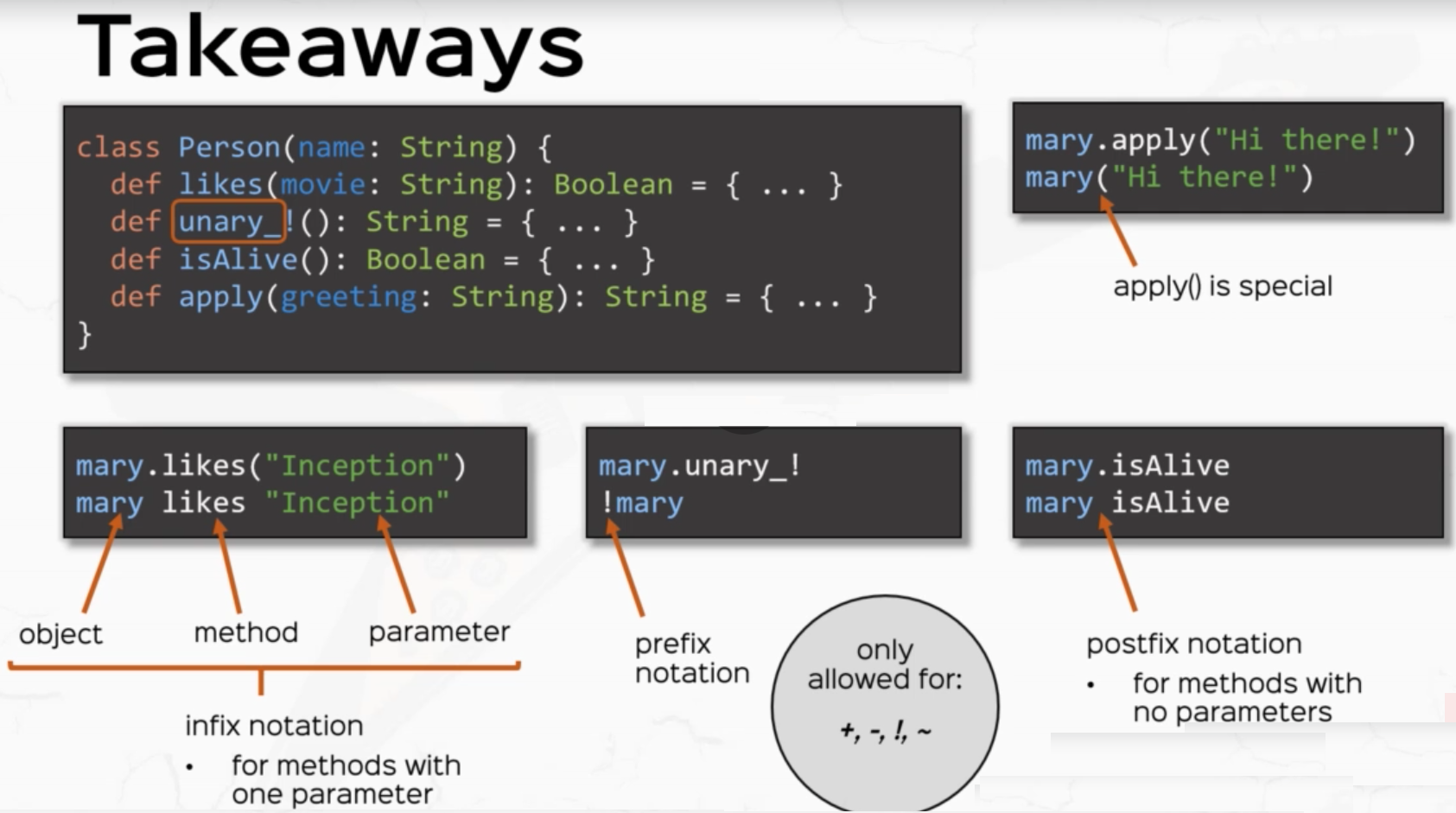ScalaSchool
Operators
Examples of Scala Operations
1 > 0 true greater than (a comparison operation)
1 == 0 false equals to (another comparision operation)
1.max(0) 1 max operation returns the greater value between the left and right argument
-5.abs 5 absolute value operation
"Hello, " + "world!" "Hello, world!" concatentation operation
"#" * 3 "###" times operation
"Alice".toUpperCase "ALICE" to upper case operation
true && true true logical and operation with infix notation
true.&&(true) true logical and operator with dot notatation
Cheat Sheet
- Infix notation
x _op_ yisx.op(y) - Postfix notation
x opisx.op() - Only + - ! ~ can be Prefix operators define method unary_op
- Right associativity if the last character is a colon :
x(i) = x(j)isx.update(i, x.apply(j))- There is no
++or--for numbers. Usex += 1andy -= 1 - Use
x == yto compare object – it callsequals
Methods as operators
myObject myMethod 1 is the same as calling myObject.myMethod(1)
Operator (i.e. function) names can be alphanumeric, symbolic (e.g. x1, *, +?%&, vector_++, counter_=)
Arithmetic Operators
- Arithmetic operators have the same precedence as in mathematics. The following expressions are equivalent:
1 + 2 * 3
1.+(2.*(3))
- The result of arithmetic operations has the type of the widest operand: ```scala
1 + 2 // Int 1 + 2.0 // Double
## Operator Precedence in General
The precedence of an operator is determined by its first character, with the following increasing order of priority:
Assigment Operations (lowest priority)
Non-operator characters (all letters)
|
^
&
= !
< >
:
+ -
* / %
All other special characters (highest priority)
## Operation Associativity
The associativity of an operator is determined by its last character: Right-associative if ending with `:`, Left-associative otherwise.
Note that assignment operators have lowest precedence. (Read Scala Language Specification 2.9 sections 6.12.3, 6.12.4 for more info)
## Defining your own Operators:
* Methods with one parameter can be called with `infix` notation
```scala
def likes(movie: String): Boolean = movie == favoriteMovie
mary likes "Inception"
- Methods unary functions (e.g. have one operand) can be called with
prefixnotationdef unary_! : String = s"$name, what the heck?!?" !mary - Methods zero parameter functions can be called with
postfixnotationdef isAlive: Boolean = true mary isAlive - Apply functions allow objects to be called like functions
// the apply function
def apply(): String = s"Hi, my name is $name and I like $favoriteMovie"
mary() // will call the apply function
